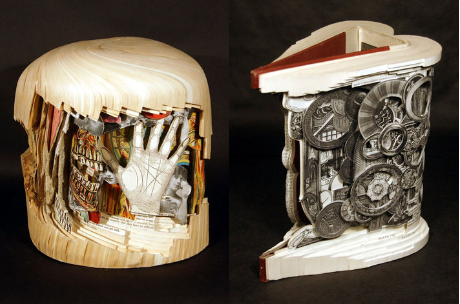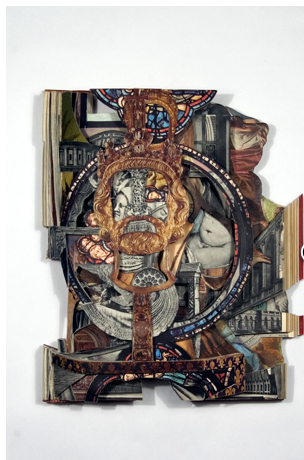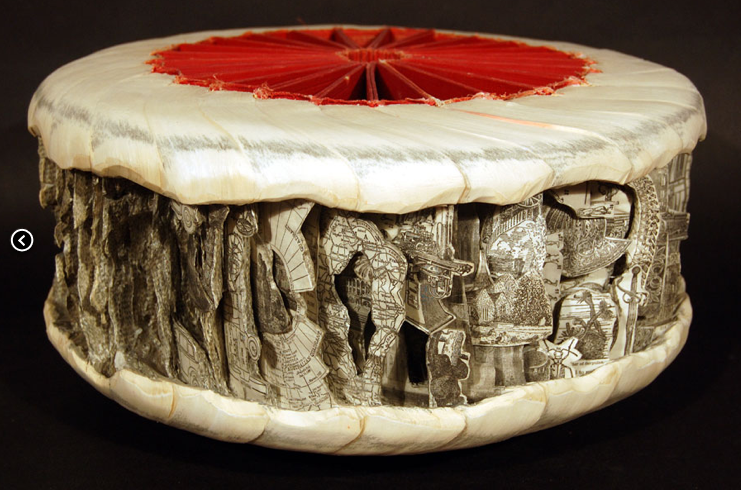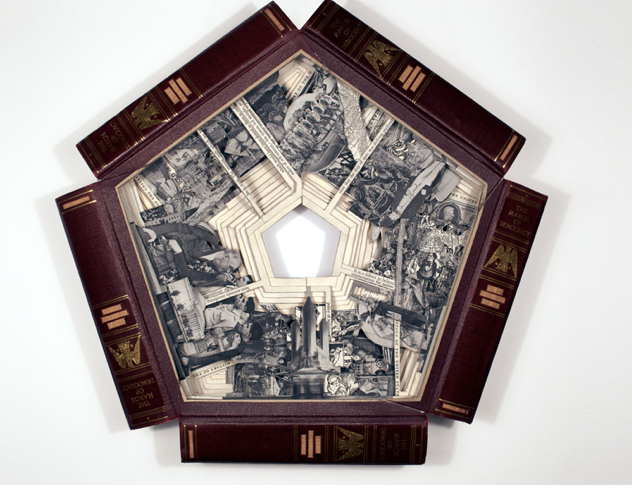
Libraries of Health and Complete Antique, Brian Dettmer.
H/T to Brian Gatten, Lauren Gantz and NPR
In honor of World Book Day (March 3--but it's not too late to celebrate!) NPR's visual culture blog, The Picture Show, featured work by Atlanta artist Brian Dettmer. Dettmer takes vintage books and carves them into sculptures that, as Mito Habe-Evans explains, "[deconstruct] the linear narrative determined by the structure of the book" and open the door for new interpretations. In giving new life to a supposedly dying medium, Dettmer's sculptures make an argument about the cultural space of physical books, now and in the future.

No title provided on website; Brian Dettmer
While Dettmer himself seems more or less optimistic about the future of books, his art suggests multiple readings. The pieces seem to suggest the incredible possibility of paper as a medium by showing that more can be done with it than we might at first think; however, whether this possibility would translate to continued use of books is unclear. It seems that rendering the human/book relationship as an aesthetic object gives credence to the argument that continuing said relationship is just nostalgia; while the human/book relationship is beautiful, this art suggests that it isn't necessarily practical. Of course, depending on audience, the argument that the human/book relationship is beautiful is in itself enough to justify the continued production of print texts. The relationship would be at least a little different from that you might have with a text you read on your Kindle, but not worse.

Screen capture from Dettmer's website; no title provided
These works also suggest that the physicality of a human/book relationship is part of what individualizes the experience of reading. It is because the books are paper that Dettmer can engage with them in this particular way, producing individualized pieces of art that represent a human/book relationship. Kindles have the mark of mass production; the fact that Dettmer uses vintage books with limited availability gives the appearance of a distinct and special origin. Even if a Kindle can be modified, physically or through programming, to make a piece of art, Dettmer's use of vintage books, which invoke images of the artist searching stores and calling suppliers, suggests that the history behind the pieces, and therefore their messages, will always be fundamentally different.





Recent comments
2 years 29 weeks ago
2 years 44 weeks ago
2 years 44 weeks ago
2 years 50 weeks ago
3 years 4 weeks ago
3 years 4 weeks ago
3 years 4 weeks ago
3 years 6 weeks ago
3 years 6 weeks ago
3 years 6 weeks ago